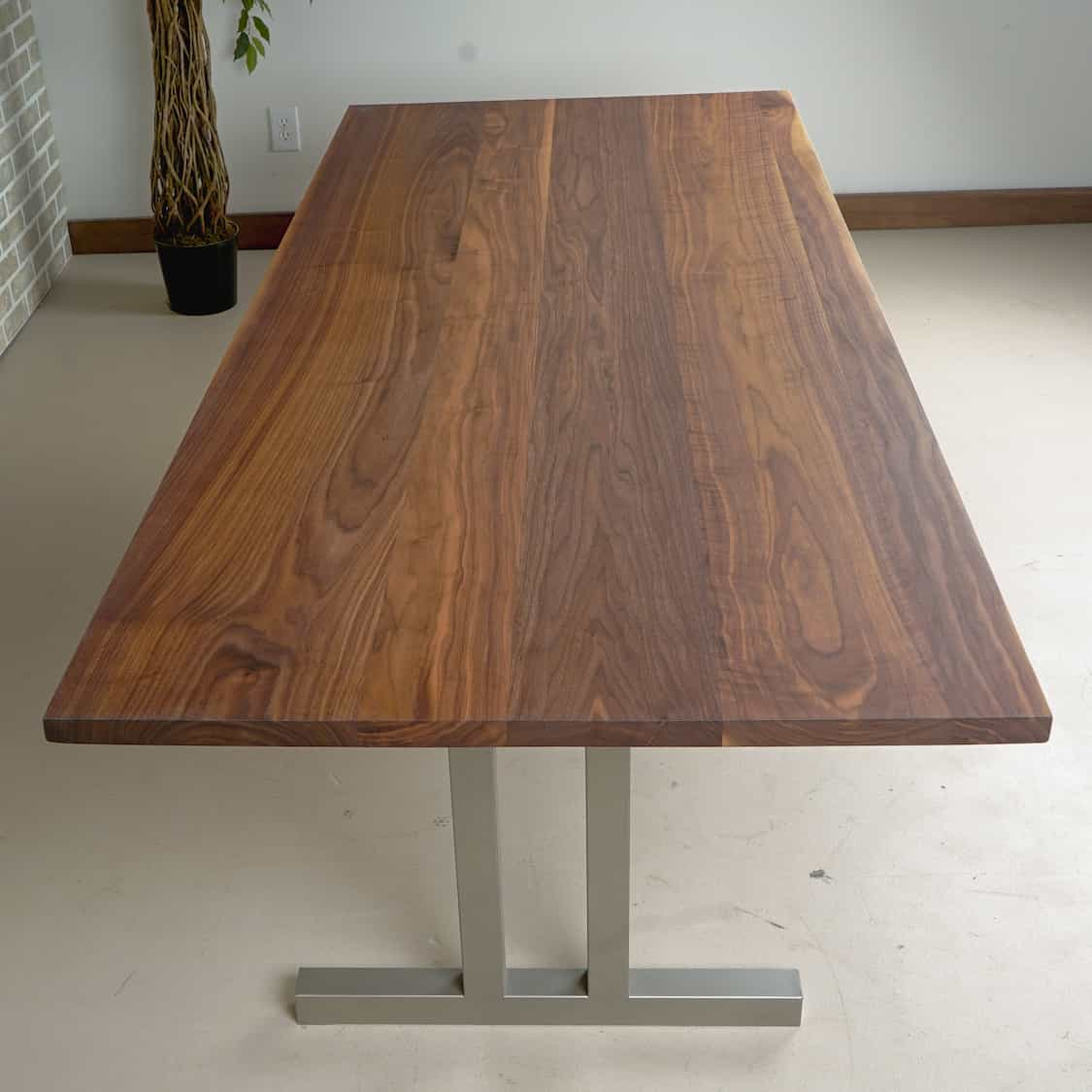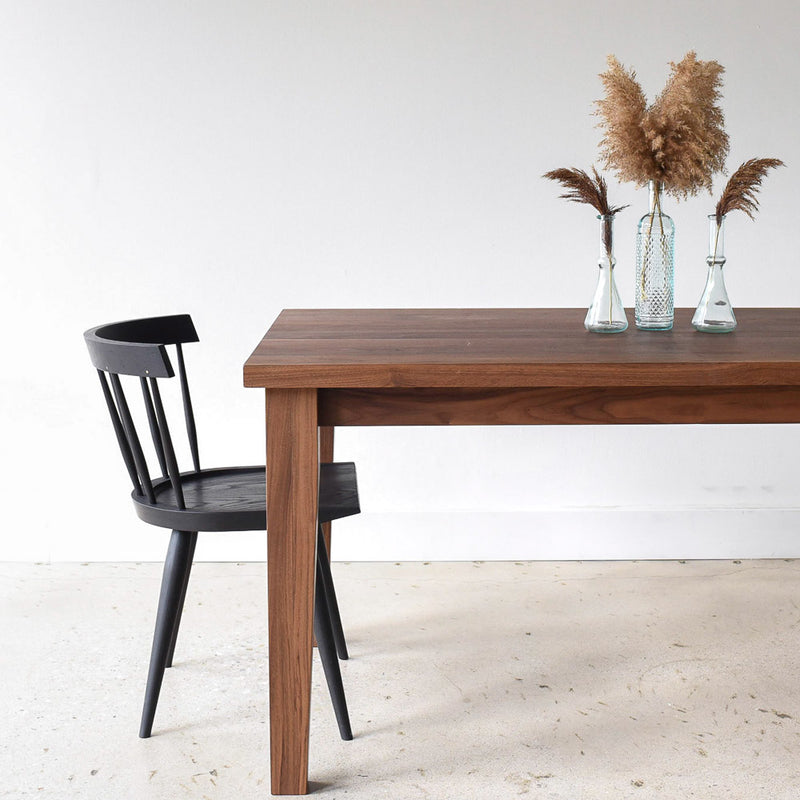Achieve an Advanced Look with Costs Dining Table Legs Wood Options
Achieve an Advanced Look with Costs Dining Table Legs Wood Options
Blog Article
Crucial Considerations for Picking the Right Dining Table Legs Timber
Selecting the suitable wood for dining table legs includes a nuanced understanding of different aspects that affect both performance and visual charm. The option of timber type, ranging from robust hardwoods to much more delicate softwoods, plays a critical role in guaranteeing sturdiness and stability. Each of these aspects can drastically affect the general experience of your dining space.
Importance of Timber Kind

Hardwoods, such as walnut, oak, and maple, are often preferred for their strength and resistance to wear. These kinds of timber give a durable structure that can hold up against day-to-day usage, making them suitable for eating tables that experience regular events. In contrast, softer woods like ache might be a lot more prone to damages and scratches, which might not be ideal for high-traffic locations.
In addition, the selection of wood can also impact the convenience of upkeep. Some woods require normal oiling or securing to protect their appearance, while others might be a lot more forgiving. Ultimately, picking the proper wood type involves stabilizing aesthetic considerations with sensible demands, making sure that the table legs not just look attractive but additionally stand the examination of time.
Evaluating Security and Stamina
When evaluating eating table legs, one need to consider the security and strength they give to the general framework. The legs are important in supporting the table top and guaranteeing the eating experience is satisfying and safe. A steady table is important for protecting against tipping or tottering, which can result in spills or crashes during dishes.
The choice of wood kind considerably influences strength. Woods such as oak, maple, and walnut are normally more robust and sturdy than softwoods like ache or fir. Additionally, the density and layout of the legs play an important duty; thicker legs or those with a tapered style can use better support and security.

Aesthetic Factors To Consider
While functionality is vital, the visual appeal of eating table legs can not be overlooked, as they substantially affect the overall style and setting of the eating space. The selection of timber, design, and finish can take away or enhance from the table's visual effect.

Surfaces additionally play an essential duty in visual appeals. An all-natural finish can highlight the wood's innate elegance, while painted or discolored legs can present color and character right into the room. The percentage and scale of the legs relative to the tabletop and bordering furnishings has to be considered to guarantee visual equilibrium and communication.
Inevitably, the eating table legs should not only serve a practical purpose but likewise add to a natural and welcoming environment, making them an essential consideration in the overall design of the dining area.
Maintenance Requirements
To guarantee durability and protect the appeal of wood dining table legs, regular maintenance is vital (Dining Table Legs Wood). Timber is a natural material that can be vulnerable to damage from moisture, heat, and wear. For that reason, establishing a routine treatment strategy will dramatically boost the durability of your eating table legs.
Begin with routine dusting using a soft, lint-free cloth to get rid of dust and debris that can scratch the surface area. For even more extensive cleaning, use a light soap option and damp fabric, avoiding excess dampness that might leak into the timber. It is recommended to apply a high-quality timber polish or conditioner every few months to nurture the wood and keep its appeal.
Deal with any kind of damages or scratches immediately with appropriate wood filler or touch-up pens to protect against further degeneration. By sticking to these maintenance needs, you will certainly not only protect the visual appeal of your wooden dining table legs however likewise extend their functional life-span.
Budget and Expense Factors
Budget plan and cost aspects regularly play a critical function in the decision-making procedure for choosing wooden table legs. When assessing alternatives, it is necessary informative post to establish a clear budget plan that lines up with your overall furniture financial investment. The price of wood eating table legs can differ significantly based upon the sort of workmanship, timber, and design complexity.
Woods such as walnut, oak, and cherry normally command greater rates due to their longevity and aesthetic appeal. On the other hand, softer timbers like pine might be much more economical but could not use the same longevity. Furthermore, customized or artisan-crafted legs can sustain added costs, mirroring the skill and time purchased their creation.
It is likewise important to think about the potential long-term value of your investment. While going with lower-cost materials might seem financially prudent at first, they might call for even more constant replacement or repairs, eventually boosting total expenditure.
Therefore, balancing quality and price is vital. Prioritize products that fulfill your visual preferences while guaranteeing they fit comfortably within your budget plan, allowing you to produce an eating location that is both practical and aesthetically attractive.
Conclusion
To conclude, picking the proper timber for dining table legs demands cautious factor to consider of numerous variables, consisting of timber type, stability, looks, maintenance, and budget plan. Hardwoods such as oak and try this walnut offer exceptional durability and strength, while design and density add to overall stability. Visual allure and maintenance demands need to straighten with individual preferences and way of life. Inevitably, a well-informed decision will improve the long life and aesthetic appeal of the table, guaranteeing contentment and functionality for years to find.
Selecting the best type of wood for dining table legs is crucial for both aesthetic allure and architectural honesty. Eventually, choosing the suitable wood kind entails stabilizing aesthetic considerations with practical needs, making certain that the eating table legs not only look appealing yet additionally stand the test of time.
It is recommended to apply a high-quality timber polish or conditioner every few months to nurture the wood and maintain its gloss.
The price of wooden eating table legs can differ considerably based on the type of design, timber, and craftsmanship intricacy.
In conclusion, picking the proper wood for eating visite site table legs necessitates mindful consideration of numerous aspects, including timber type, stability, visual appeals, upkeep, and budget.
Report this page